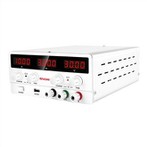Do analog multimeters work the same as digital multimeters?
Different.
The internal structure of the analog multimeter includes a meter head, a resistance, and a battery, of which the meter head is generally a magnetoelectric DC microammeter. The internal battery is used only when measuring resistance. The positive electrode of the battery is connected to the black test lead, so the current flows from the black test lead and the red test lead flows in. When measuring the DC current, the shunt is connected by shifting the gear and connecting the parallel resistance. Because the full bias current of the meter head is very small, the shunt resistance is used to expand the range. When measuring DC voltage, connect resistance in series on the meter head, and realize the conversion of different ranges through different additional resistances.
Digital multimeter is composed of function converter, A/D converter, LCD display (liquid crystal display), power supply and function/range conversion switch, etc. Among them, A/D converter generally adopts ICL7106 double integral A/D converter . The ICL7106 uses two integrations, the first integration of the input analog signal V1 is called the sampling process; the second integration of the reference voltage - VEF integration is called the comparison process. The two integral processes are counted by the binary counter, converted into digital quantity, and displayed in digital form. To measure the power such as AC voltage, current, resistance, capacitance, diode forward voltage drop, transistor amplification factor, etc., a corresponding converter must be added to convert the measured power into a DC voltage signal. Note that the positive pole of the digital multimeter corresponds to the red pen, not the black pen.





